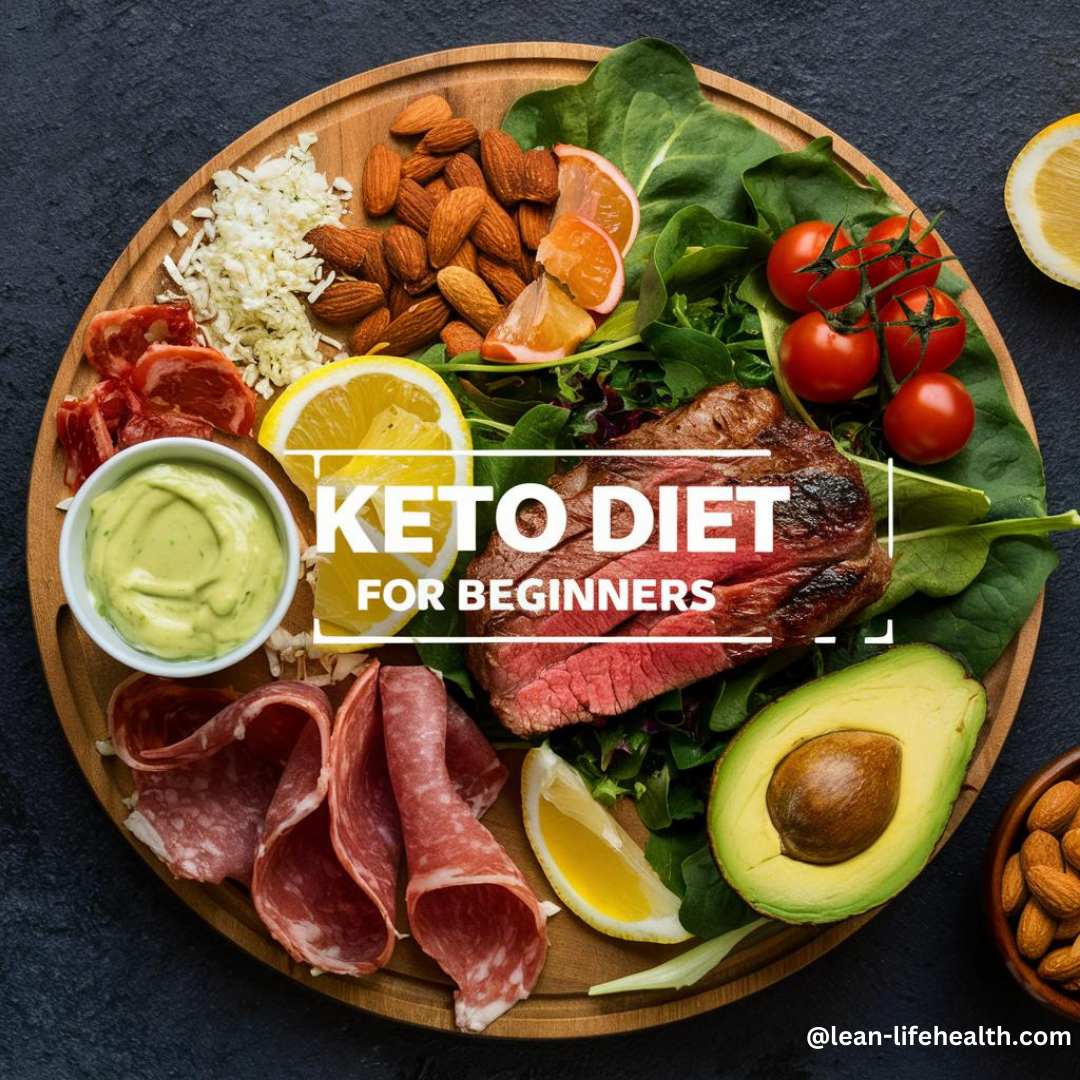introduction
Welcome to our comprehensive guide on the optimal keto diet plan for weight loss and health!
If you’re looking to shed those extra pounds and enhance your overall well-being, you’ve come to the right place. The keto diet has gained significant popularity in recent years for its effectiveness in helping individuals achieve their weight loss goals while also providing numerous health benefits.
The keto diet is centered around a low-carbohydrate, high-fat eating approach that encourages your body to enter a state known as ketosis. In ketosis, your body shifts from using glucose as its primary fuel source to burning stored fat for energy. This metabolic change not only supports weight loss but also offers various health benefits, including improved insulin sensitivity, enhanced cognitive function, and reduced inflammation.
In this article, we will guide you through:
- Understanding the keto diet
- Tailoring the plan to your individual needs
- Identifying the essential components of a keto diet
- Meal planning strategies
- Tracking your progress
- Incorporating exercise
- Long-term maintenance
Let’s get started on your keto journey to better health and weight management!
Key Takeaways
- A well-designed keto diet plan can effectively help you achieve weight loss and improve your overall health.
- The keto diet emphasizes low carbohydrate consumption and high fat intake to induce a metabolic state called ketosis.
- To personalize your keto diet plan, determine the ideal macronutrient ratio that suits your individual needs.
- Include healthy fats, high-quality protein, and low-carb vegetables as essential components of your keto eating plan.
- Successful adherence to a keto diet relies on proper meal planning, preparation, and grocery shopping.
Understanding the Keto Diet
The keto diet has gained significant popularity for weight loss and overall health improvement. But what exactly is the keto diet, and how does it work?
The ketogenic eating approach is a low-carb, high-fat diet that triggers a metabolic state called ketosis. In ketosis, your body primarily relies on fats for energy instead of carbohydrates, leading to efficient fat burning. By limiting your carb intake to around 20-50 grams per day, you push your body into this state.
Ketosis is a natural metabolic process that occurs when glucose levels are low. During this process, the liver breaks down fatty acids into molecules called ketones, which serve as an alternative fuel source for your body, including your brain.
Transitioning to a low-carb lifestyle allows you to tap into the benefits of ketosis, such as weight loss, improved mental clarity, increased energy levels, and enhanced overall health.
“The keto diet allows your body to enter a state of ketosis, where it becomes incredibly efficient at burning fat for energy. This can lead to significant weight loss and numerous health benefits.” – Dr. Mark Daniels, Registered Dietitian
To achieve and maintain ketosis, adopting a low-carb approach is key. By substantially reducing carbohydrate intake, your body switches from using glucose as its primary fuel to utilizing stored fat for energy.
While on the keto diet, daily meals typically consist of high-quality fats, moderate protein, and a limited intake of carbohydrates mainly from vegetables. This macronutrient combination helps keep your body in ketosis, supporting your weight loss and health goals.
| Food Category | Examples |
|---|---|
Healthy fats | Avocado, olive oil, coconut oil, nuts |
| High-quality protein | Salmon, chicken, grass-fed beef, tofu |
| Low-carb vegetables | Spinach, broccoli, cauliflower, zucchini |
By cultivating a diet rich in these essential components, you can enjoy a wide variety of delicious and satisfying meals while reaping the benefits of the keto lifestyle.
Tailoring Your Keto Diet Plan
Personalizing your keto diet plan is essential to meet your individual needs and optimize results. A one-size-fits-all approach may not be suitable for everyone, as our bodies have unique requirements and preferences.
Determining the right macronutrient ratio is a crucial step in tailoring your keto eating plan. Macronutrients—fats, proteins, and carbohydrates—play a significant role in achieving and maintaining ketosis, the metabolic state where your body burns fat for fuel instead of carbohydrates.
To find the ideal macronutrient ratio for you, consider factors such as your current weight, body composition, activity level, and specific health goals. You may need to adjust your fat, protein, and carbohydrate intake to suit your individual needs.
Here are some general guidelines to help personalize your keto diet plan:
- Macronutrient Ratios: A common starting point is a macronutrient ratio of approximately 70% fats, 25% protein, and 5% carbohydrates. However, these may vary based on individual goals.
- Caloric Needs: Estimate your daily caloric needs based on your weight, height, age, and activity level. This will help you determine the total amount of each macronutrient you should aim for.
- Monitor Your Body’s Response: Track your meals and how your body responds. Some individuals may find they need more or less protein or fat to remain in ketosis and feel their best.
- Adjust for Activity Levels: If you’re highly active or engaged in endurance activities, you might need to slightly increase your carbohydrate intake to support performance while still maintaining a low-carb approach.
- Consult with a Professional: If you’re unsure about how to customize your plan or have specific health conditions, consider working with a registered dietitian or nutritionist who specializes in ketogenic diets.
- Listen to Your Body: Pay attention to how you feel. Hunger levels, energy, and overall well-being can guide you in making necessary adjustments.
Sample Macronutrient Ratios Based on Individual Needs:
| Macronutrients | Percentage of Caloric Intake |
|---|---|
| Standard Ketogenic Diet (SKD) | 65-75% Fat 20-30% Protein 5-10% Carbohydrates |
| Targeted Ketogenic Diet (TKD) | 65-75% Fat 20-30% Protein 10-15% Carbohydrates (consumed around workouts) |
| Cyclical Ketogenic Diet (CKD) | 65-75% Fat 20-25% Protein 5-10% Carbohydrates (carbohydrate refeeding on specific days) |
Remember, these ratios are just starting points, and individual needs may vary. It’s important to monitor your progress and adjust your macronutrient intake as necessary. Staying in a state of ketosis while meeting your personal goals is key to success with a keto diet.
Regularly tracking your food intake and how your body responds will help you fine-tune your macronutrient ratios for optimal results. This may involve increasing or decreasing fat or protein levels, adjusting your carbohydrate intake, or changing your meal timing.
Listening to your body and being flexible with your approach can greatly enhance your experience on the keto diet. Whether your goal is weight loss, improved energy, or better overall health, remaining attentive to your body’s signals will help you stay on track and achieve the results you desire. Keep experimenting and refining your plan until you find what works best for you.
Essential Components of a Keto Diet
When following a keto diet, it’s crucial to incorporate three essential components into your eating plan: healthy fats, high-quality protein, and low-carb vegetables. These elements serve as the foundation of a balanced and nourishing ketogenic diet that promotes weight loss and enhances overall health.
The Importance of Healthy Fats
A key feature of the keto diet is its focus on healthy fats, which help keep you satiated, provide energy, and support bodily functions. Here are some great sources of healthy fats to include:
- Avocados: High in monounsaturated fats and fiber.
- Olive Oil: Ideal for cooking and salad dressings.
- Coconut Oil: Rich in medium-chain triglycerides (MCTs) for quick energy.
- Nuts and Seeds: Almonds, walnuts, and chia seeds are nutritious snack options.
- Fatty Fish: Salmon and mackerel provide omega-3 fatty acids.
- Full-Fat Dairy: Options like cheese and heavy cream add flavor and richness.
- Nut Butters: Almond and peanut butter offer healthy fat with delicious taste.
High-Quality Protein for Optimal Nutrition
A key component of a keto diet is high-quality protein, essential for tissue repair and muscle maintenance. Choose lean options such as:
- Eggs
- Lean Meats: Chicken and turkey
- Fatty Fish: Salmon and mackerel
- Pork: Lean like pork loin
- Tofu and Tempeh: Plant-based proteins
- Dairy: Greek yogurt and cottage cheese
- Protein Powder: Whey or plant-based
Load Up on Low-Carb Vegetables
Low-carb vegetables are a vital part of a keto diet, as they are rich in essential nutrients and fiber while being low in carbohydrates. These vegetables provide bulk to your meals and help keep you feeling full. When choosing low-carb options, focus on non-starchy varieties that are low in net carbs. Here are some examples to include in your keto meals:
- Leafy Greens: Spinach, kale, and arugula
- Broccoli: High in fiber and vitamins
- Cauliflower: Versatile and great for substitutes
- Zucchini: Low in carbs, perfect for noodles
- Bell Peppers: Colorful and nutrient-dense
- Asparagus: Tasty and low-calorie
- Mushrooms: Rich in flavor and low in carbs
Meal Planning and Preparation
When following a keto diet plan, meal planning and preparation are essential for success. By planning your meals in advance and organizing your grocery shopping, you can ensure that you always have keto-friendly options on hand and avoid the temptation of unhealthy choices. This approach helps you stay committed to your diet and makes healthy eating more convenient.
Valuable Tips for Meal Planning
Here are some tips for effective keto meal planning:
- Weekly Meal Plan: Outline meals for the week.
- Shopping List: List all necessary ingredients.
- Batch Cook: Prepare large portions for easy meals.
- Keep It Simple: Choose quick and easy recipes.
- Incorporate Variety: Use different proteins, fats, and veggies.
- Stay Flexible: Adjust your plan as needed.
- Prep Snacks: Have keto-friendly snacks ready.
- Use Tools: Utilize meal prep containers and slow cookers.
Efficient Grocery Shopping for Keto
- Plan Ahead: Create a meal plan for the week and make a shopping list based on it.
- Stick to the Perimeter: Focus on the outer aisles of the grocery store where fresh produce, meats, and dairy are typically located.
- Read Labels: Check for hidden sugars and carbs in packaged foods. Look for items with low net carbs.
- Buy in Bulk: Purchase non-perishable items like nuts, seeds, and oils in bulk to save money.
- Choose Whole Foods: Prioritize fresh vegetables, high-quality meats, and healthy fats over processed foods.
- Shop Seasonal: opt for seasonal produce to ensure freshness and better prices.
- Check for Sales: Look for discounts on keto-friendly items to save on your grocery bill.
- Use a Grocery App: Consider using an app to keep track of your list and find keto-friendly products.

By following these tips, you can make your grocery shopping efficient and ensure you have all the essentials for your keto diet!
| Recipe | Ingredients | Preparation Time |
|---|---|---|
| Keto Avocado and Bacon Salad | Bacon, avocado, mixed greens, cherry tomatoes, red onion, olive oil, lemon juice, salt, pepper | 15 minutes |
| Low-carb Cauliflower Fried Rice | Cauliflower rice, eggs, mixed vegetables (peppers, carrots, peas), soy sauce, garlic powder, sesame oil | 20 minutes |
| Keto Chicken Parmesan | Chicken breast, almond flour, Parmesan cheese, eggs, marinara sauce, mozzarella cheese, basil | 30 minutes |
Here are a few delicious keto-friendly recipes to get you started:
Tracking Progress and Making Adjustments
- Keep a Food Diary: Log your daily food intake to monitor macronutrient ratios and overall calorie consumption.
- Use Apps: Utilize apps like MyFitnessPal or Chronometer to track calories and macros easily.
- Monitor Ketone Levels: Use ketone testing strips or a blood ketone meter to check if you’re in ketosis.
- Regular Weight Checks: Weigh yourself weekly at the same time of day to track your weight changes.
- Assess Measurements: Take body measurements (waist, hips, etc.) to monitor changes in body composition.
- Evaluate Energy Levels: Pay attention to how you feel—energy, mood, and hunger levels can indicate if adjustments are needed.
- Adjust Macronutrients: If necessary, tweak your fat, protein, or carb intake based on your progress and goals.
- Consult a Professional: If unsure about adjustments, consider consulting a nutritionist or dietitian with keto experience.
By regularly tracking your progress and making informed adjustments, you can optimize your keto approach and continue working towards your health and fitness goals!
Combining Keto with Exercise
Physical Activity on Keto
- Understand Your Energy Needs: When starting a keto diet, your body may take time to adapt. Monitor your energy levels, especially when engaging in high-intensity workouts.
- Choose the Right Types of Exercise: Focus on a mix of strength training, low-intensity steady-state cardio (LISS), and high-intensity interval training (HIIT) that suits your energy levels.
- Timing Your Workouts: Some people find it beneficial to work out in a fasted state, while others may prefer to eat a small, keto-friendly snack beforehand. Experiment to see what works best for you.
- Stay Hydrated: Proper hydration is crucial, especially on keto, as the diet can lead to increased water loss. Make sure to drink enough water before, during, and after workouts.
- Electrolyte Balance: Ensure you’re getting enough electrolytes (sodium, potassium, magnesium) to prevent cramps and fatigue during exercise.
- Listen to Your Body: Pay attention to how your body responds to both the keto diet and exercise. Adjust your workout intensity and nutrition as needed to maintain energy levels.
- Post-Workout Nutrition: After exercise, consume a keto-friendly meal or shake that includes protein and healthy fats to aid recovery.
- Stay Consistent: Regular physical activity can enhance the effects of the keto diet, improving weight loss and overall health. Aim for a balanced routine that you enjoy.
By effectively combining the keto diet with a consistent exercise regimen, you can optimize your health, energy levels, and fitness progress!
Engaging in physical activity while following a keto diet can enhance weight loss by increasing calorie expenditure and promoting fat burning. Exercise also helps build lean muscle mass, improving body composition.
Finding enjoyable activities is essential for your fitness routine, whether it’s cardiovascular workouts, strength training, or flexibility exercises. “The best fitness routine is the one that you will stick to.” Aim for at least 150 minutes of moderate-intensity or 75 minutes of vigorous-intensity aerobic activity per week, alongside strength training twice a week.
Regular exercise boosts energy levels by increasing blood flow and oxygen to your muscles and releasing endorphins, which enhance mood and well-being. During the initial stages of keto, moderate-intensity workouts like brisk walking or cycling are beneficial; high-intensity exercises are better suited for those who are fat-adapted.
Incorporating exercise into your keto lifestyle is a personal journey. Consult a healthcare professional or certified fitness trainer to create a fitness routine that complements your keto diet and supports your overall health.
Sample Fitness Routine
Here’s an example of a well-rounded fitness routine that can be combined with a keto diet plan:
| Day | Activity | Duration |
|---|---|---|
| Monday | Strength Training | 45 minutes |
| Tuesday | Cardiovascular Exercise (e.g., Running, Cycling, Dancing) | 30 minutes |
| Wednesday | Rest Day | – |
| Thursday | Yoga or Pilates | 60 minutes |
| Friday | Cardiovascular Exercise (e.g., Swimming, Jumping Rope, HIIT) | 45 minutes |
| Saturday | Active Rest Day (e.g., Hiking, Walking) | 60 minutes |
| Sunday | Flexibility Training (e.g., Stretching, Yoga) | 30 minutes |
Long-Term Maintenance and Sustainability
When it comes to following a keto diet plan, long-term maintenance and sustainability are essential for achieving optimal weight and health. Adopting healthy habits, maintaining a positive mindset, and embracing the ketogenic lifestyle are key to ensuring lasting success.
To sustain a keto diet, it’s crucial to develop a lifestyle that supports your goals. This includes establishing a routine that prioritizes regular exercise, nutritious food choices, and balance in daily life.
Building healthy habits is vital for long-term success. Focus on incorporating sustainable practices such as meal planning, mindful eating, and consistent physical activity. These habits not only aid your keto journey but also enhance your overall health and well-being.
Maintaining a positive mindset is equally important. Transitioning to a keto diet is a significant lifestyle change and may present challenges. Approach any setbacks or plateaus with resilience, viewing them as opportunities for growth.
Embracing the ketogenic lifestyle as a transformative choice is essential for sustainable results. Develop a strong belief in the benefits of keto and its positive effects on your health. Cultivating a mindset that focuses on progress rather than perfection will help you celebrate each step forward on your journey.
“The key to long-term success on a keto diet lies in making it a sustainable lifestyle rather than a short-term fix.” – Dr. Jenna Richards, Keto Diet Specialist
By prioritizing sustainability in your keto diet plan, you’ll not only meet your weight loss and health goals but also experience the transformative power of a healthy and balanced lifestyle.
Conclusion
In conclusion, following an optimal keto diet can greatly enhance weight loss and overall health. By personalizing your approach with healthy fats, high-quality protein, and low-carb vegetables, you can create a balanced eating plan.
Effective meal planning and preparation are essential for success. Use keto-friendly recipes and monitor your progress to make necessary adjustments. Additionally, combining your diet with regular exercise will boost energy levels and support weight loss.
Adopting healthy habits and maintaining a positive mindset are key to a sustainable keto lifestyle. Remember, the keto diet is not one-size-fits-all; customize your plan, stay consistent, and embrace the benefits of a well-designed ketogenic lifestyle.
FAQ
What is a keto diet plan?
A keto diet plan is a high-fat, low-carbohydrate eating strategy designed to achieve ketosis, where the body burns fat for fuel instead of carbs, aiding in weight loss and health benefits.
How does the keto diet work for weight loss?
By drastically reducing carbohydrates and increasing fat intake, the keto diet shifts the body’s energy source from glucose to stored fat, leading to weight loss.
Is the keto diet safe for overall health?
The keto diet can be safe when followed properly, but it may not suit everyone, especially those with certain medical conditions. Consulting a healthcare professional is advised before starting.
Can I personalize my keto diet plan?
Yes, personalizing your keto diet is crucial. You can adjust macronutrient ratios, select preferred foods, and modify your plan to fit your dietary restrictions.
What are the essential components of a keto diet?
Essential components include healthy fats, high-quality proteins, and low-carb vegetables, which provide necessary nutrients while minimizing carbs.
How can I plan and prepare meals on the keto diet?
Plan meals by creating a weekly menu, batch cooking, and using keto-friendly recipes. A grocery list with keto ingredients can streamline shopping.
What should I do if I hit a plateau on the keto diet?
To overcome a plateau, adjust your macronutrient ratios, try intermittent fasting, increase exercise, or explore new recipes.
Can I exercise while following a keto diet?
Yes, exercising while on a keto diet is encouraged. It supports weight loss and boosts energy levels; find a routine that fits your lifestyle.
How can I sustain a keto diet in the long term?
Adopt the keto diet as a lifestyle by building sustainable habits, maintaining a positive mindset, and seeking community support for consistency.





.jpg)









